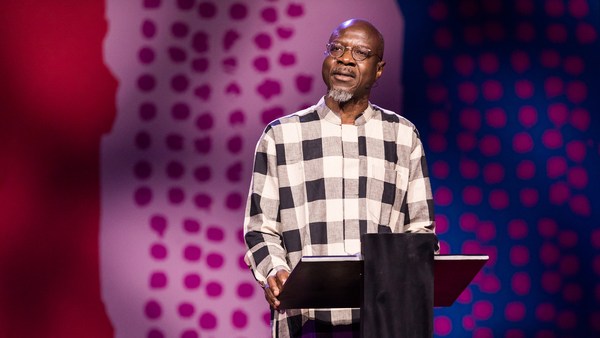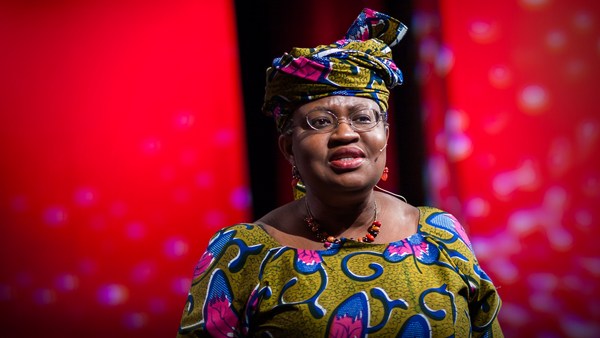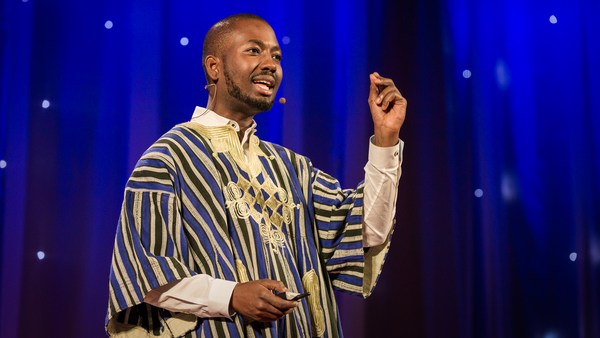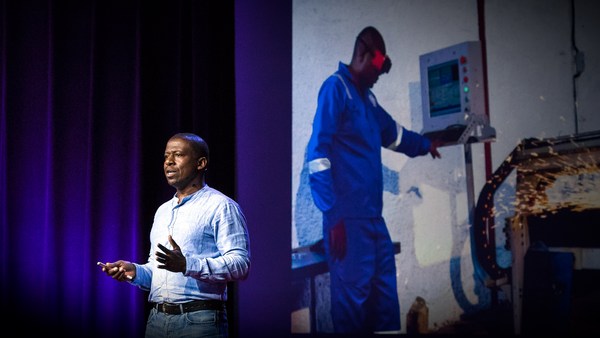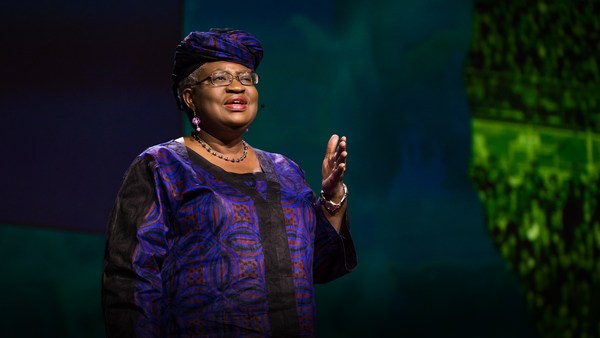Imagine if your daily commute involved tens of kilometers on these kinds of roads, driving this kind of vehicle, without any nearby service stations or breakdown assistance.
For millions of drivers in many parts of Africa, this is the norm. Since over 90 percent of passenger cars are imported, often used, they're just not designed for local usage. High import duties often compound the problem, sometimes doubling the price of a car. So most vehicles are either too expensive or too unreliable for the average consumer. Well-designed vehicles are only part of the transport challenge, though. For every 100 adults in Africa, less than five people actually own a vehicle. Public transport is available, and in countries like Kenya, it's often run by local entrepreneurs using minivans like this. But in most rural and peri-urban areas, it's fragmented and unreliable. In more remote areas without transport, people have to walk, typically tens of kilometers, to get to school or collect clean drinking water or buy supplies from nearby markets. Bad roads, disparate communities, low average income levels and inadequate vehicles all impair the transport system and ultimately constrain economic output.
Despite this constraint, the Pan-African economy is booming. Combined GDP is already over two trillion dollars. This is a massive commercial and social opportunity, not a helpless continent. So why isn't there already something better? Around the world, automotive is quarter the manufacturing sector. But in Africa, it's generally been overlooked by carmakers, who are focused on larger, established markets and emerging economies like India and China. This lack of industrialization, which itself creates a vicious-cycle barrier to the emergence of industry, has caused the dependence on imports. There is a supply-demand disconnect, with the vast majority of automotive spending on the continent today, essentially funding an international network of car exporters instead of fueling the growth of local industry.
It's entirely possible to solve this disconnect, though, starting with products that people actually want. And this is what motivated me to start Mobius, to build a vehicle in Africa, for Africa. To us, this meant reimagining the car around the needs of the consumer, simplifying nonessential features like interior fixtures and investing in performance-critical systems like suspension to create durable and affordable vehicles built for purpose.
And built for purpose is exactly where we started with our first-generation model, Mobius II, which was designed as a really rugged, low-cost SUV, able to handle heavy loads and rough terrain reliably. This launched in 2015, and we've now developed the next-generation version based on customer feedback. For high stress and heavy loading, we engineered a sturdy steel space frame. To handle acute vibration from rough roads, we ruggedized the suspension. For potholes and uneven terrain, high ground clearance was a no-brainer. And to make this something customers could actually be proud to drive in, we designed an aspirational body aesthetic. Underpinning all of this, we simplified or eliminated components like parking sensors and automatic windows wherever we could, to keep costs low and sell this at half the price of a five-year-old SUV in Kenya today.
The new --
(Applause)
The new Mobius II launches in 2018. And while durable, affordable vehicles like this are vital, a broader solution to immobility needs to go further.
Over the last decade, a transport-centric, shared economy has connected people across Africa with minivans, auto rickshaws and sedans. It's just not operated very effectively or efficiently. Enabling better access to transport is all about strengthening this public transit network, empowering local entrepreneurs who already offer similar services in their communities to operate these services more profitably and more widely. With this aim, we're taking human-centered design a step further and developing a transport platform model, which enables owners to plug in different modules, like a goods cage or ambulance unit, and run other services like goods delivery or medical transport, as well as public transport. Transportation services like this are the fundamental driver of logistics, trade, social services, access to education, health care and employment. The transportation grid to physical economies is akin to the internet to virtual economies. And the impact of increased mobility is only part of the potential here.
Since the late 1700s, the Industrial Revolution has catapulted the development of economies around the world into thriving societies. Today, manufacturing is still the engine of economic growth and stability, even as new technologies have inevitably transformed the way we live. Making stuff is important, especially for nation-states wanting to boost employment, increase skills and reduce import dependence. But while few countries can skip this industrialized stage, many have negligible manufacturing output. There are various reasons for this, but one reason is universal: hardware is hard.
(Laughter)
So what are the challenges to industry, and how are we approaching them? The first issue many people think of is a lack of skilled labor. In areas where access to good primary and secondary education are limited and employment opportunities are scarce, a small skill base is inevitable. But that doesn't mean it's immutable. There's an abundance of smart, hardworking and ambitious people in Africa, obviously. What's really lacking are good jobs that offer a path not just to employment but also professional growth. The first person we employed at Mobius over six years ago was a mechanic named Kazungu. Kazungu had gone to school up to the age of 18 and worked as an odd-job mechanic. Joining the company at the time was a near-vertical learning curve. But he rose to the challenge, and with more technical guidance from an expanding engineering team, he's grown over the years to lead a group of mechanics in R&D prototyping. A thirst for learning and the work ethic to step up to a challenge are values we now recruit on. Pairing innate values like this with on-the-job training and systems has strengthened our skill base. This works really well on the production line, where work can be systematized around clear procedural instructions and then reinforced through training. In our experience, it is possible to build a skilled workforce, and we plan to hire hundreds more people using this approach.
A second challenge is a lack of suppliers. In countries like Kenya, there are only a handful of automotive suppliers manufacturing parts like electrical harnesses, seats and glass. It's a burgeoning group, and without much demand from industry, most of these suppliers have no impetus to grow. We've worked hard with a few of them to develop the capacity to consistently manufacture components at the quality levels we need, like this supplier in Nairobi, who are helping to reduce the production cost of metal brackets and improve their ability to build conformant parts to our engineering drawings. Supply and development is standard practice in automotive globally, but it needs to be applied from the ground up with a vast majority of local suppliers to properly bolster the ecosystem. And as production volumes rise, these suppliers can employ more staff, invest in better equipment and continue to develop new manufacturing techniques to further increase output.
Building up skills and suppliers are not the only hurdles to local industrialization, but they're good examples of how we think about the challenge. You see, we're not just reimagining the car, we're reimagining our entire value chain. None of this has been easy, and we're only just getting started. But once African industry starts to scale, the potential is huge. Better products, costing less, built locally, together creating millions of jobs. Frugal innovation offers a path to economic acceleration across many industries, and the future of this continent depends on it.
The Africa 2.0 I believe in can apply locally relevant design and a commitment to solving its industrial challenges to create a more connected, more prosperous future, not just for the privileged few, but for everyone.
Thank you.
(Applause)
